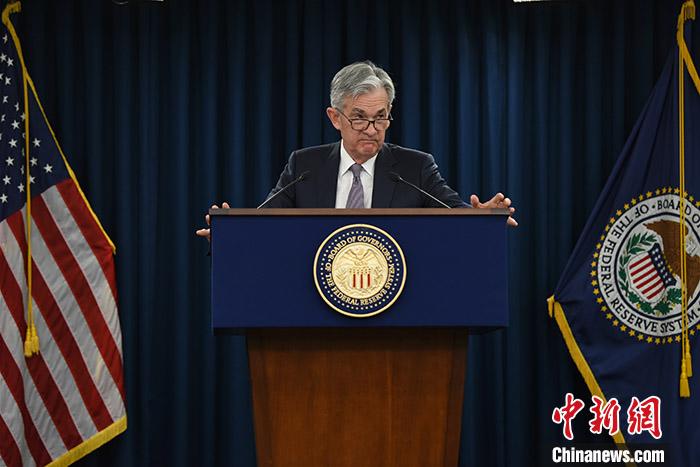China News Agency, New York, March 15th. The US Federal Reserve suddenly cut interest rates sharply on the 15th, and the Federal Reserve Fund rate fell to the range of 0-0.25%. The media said that this interest rate range is actually the zero interest rate.
Data Map: Federal Reserve Chairman Powell. Photo by China News Agency reporter Chen Mengtong
The Federal Reserve issued a statement on the same day that the outbreak of the new crown pneumonia outbreak disrupted many countries, including the United States, and that global financial markets were also significantly affected. Available economic data indicates that the US economy has entered a challenging period. Data since the January monetary policy meeting show that the energy sector has recently been under pressure, market-based inflation compensation indicators have fallen, and survey-based long-term inflation expectations indicators have hardly changed. The statement said that the benchmark interest rate will remain at current levels until it is confirmed that the US economy has withstood the test of recent events and is moving towards the goal of maximizing employment and price stability.
In response to the financial crisis, the Federal Reserve lowered the benchmark interest rate to the 0-0.25% range in December 2008, and did not begin raising interest rates until December 2015.
The Fed statement said that the Fed is prepared to use all the tools to support credit flows to households and businesses to achieve maximum employment and price stability goals. Treasury bonds and institutional mortgage-backed securities play a central role in supporting credit flows to households and businesses. To support the smooth operation of the two bond markets, the Federal Reserve will purchase at least US $ 500 billion of US Treasuries and US $ 200 billion of institutional mortgage-backed securities in the coming months. The Fed will also reinvest all the principal of its holdings of institutional bonds and institutional mortgage-backed securities into institutional mortgage-backed securities. The media said this was a restart of the "quantitative easing" policy. From 2008 to 2014, the Fed implemented the “quantitative easing” policy on three large-scale purchases of bonds to stimulate economic development and escape the financial crisis.
As US stocks have fallen sharply in the past two weeks, the Federal Reserve cut interest rates by 50 basis points on the 3rd of this month. The market had expected the Federal Reserve to cut interest rates by another 75 basis points at its regular monetary policy meeting next week, to the 0.25% -0.5% range. The New York Times quoted analysts as saying that the Fed's rate cut showed that they are becoming radical, trying to relax credit in as many ways as possible, and "acting quickly and immediately."
After the US Federal Reserve announced interest rate cuts, US stocks Dow Jones Index futures and S & P 500 index futures both fell sharply. "Wall Street Journal" said that stock index futures do not necessarily reflect the actual trend after the opening of the stock index, the trading market on Sunday evening was originally volatile. Another report in the newspaper said that many analysts expect the US economy to fall into recession in the first half of 2020, and the economic recovery depends on the control of the epidemic in the United States. (Finish)

